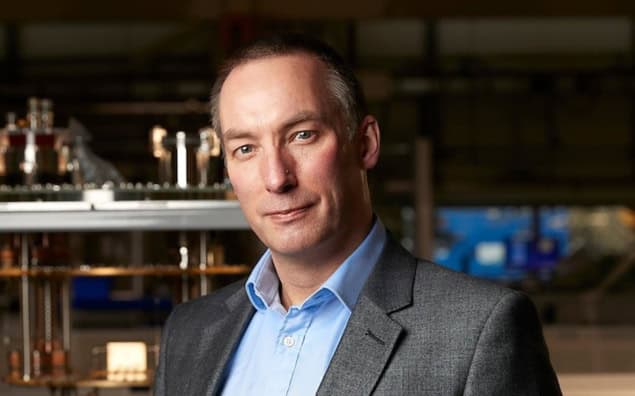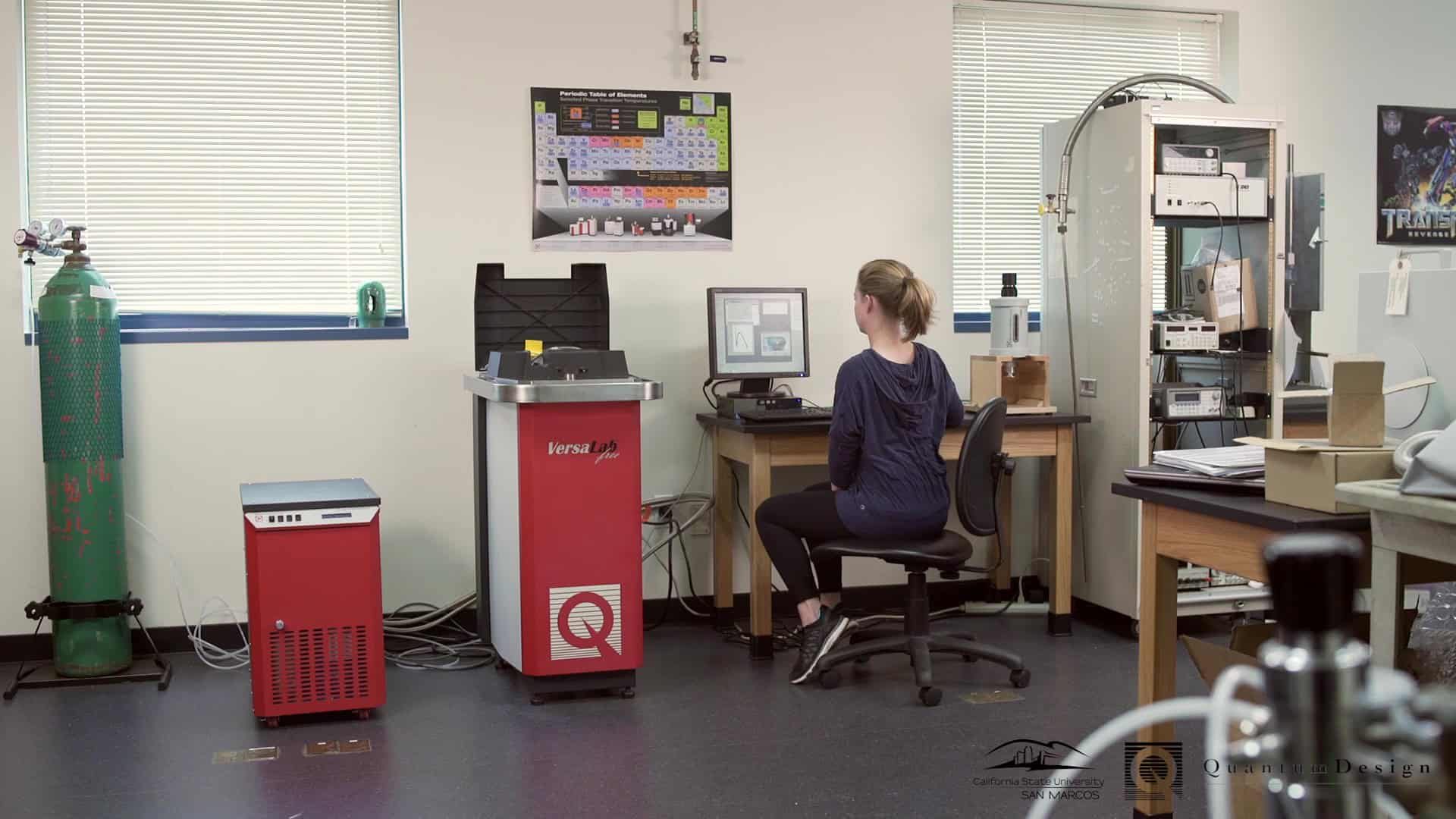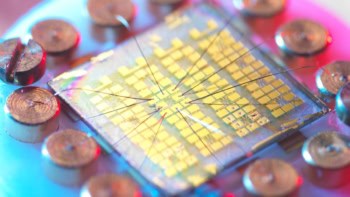Scientific equipment makers are building a diverse workforce to create and support the specialist cryogenic tools needed for expanding markets in materials measurement and the quantum sector

The meteoric rise of quantum technologies from research curiosity to commercial reality is creating all the right conditions for a future skills shortage, while the ongoing pursuit of novel materials continues to drive demand for specialist scientists and engineers. Within the quantum sector alone, headline figures from McKinsey & Company suggest that less than half of available quantum jobs will be filled by 2025, with global demand being driven by the burgeoning start-up sector as well as enterprise firms that are assembling their own teams to explore the potential of quantum technologies for transforming their businesses.
While such topline numbers focus on the expertise that will be needed to design, build and operate quantum systems, a myriad of other skilled professionals will be needed to enable the quantum sector to grow and thrive. One case in point is the diverse workforce of systems engineers, measurement scientists, service engineers and maintenance technicians who will be tasked with building and installing the highly specialized equipment and instrumentation that is needed to operate and monitor quantum systems.
“Quantum is an incredibly exciting space right now, and we need to prepare for the time when it really takes off and explodes,” says Matt Martin, Managing Director of Oxford Instruments NanoScience, a UK-based company that manufactures high-performance cryogenics systems and superconducting magnets. “But for equipment makers like us the challenge is not just about quantum, since we are also seeing increased demand from both academia and industry for emerging applications in scientific measurement and condensed-matter physics.”
Martin points out that Oxford Instruments already works hard to identify and nurture new talent. Within the UK the company has for many years sponsored doctoral students to foster a deeper understanding of physics in the ultracold regime, and it also offers placements to undergraduates to spark an early interest in the technology space. The firm is also dialled into the country’s apprenticeship scheme, which offers an effective way to train young people in the engineering skills needed to manufacture and maintain complex scientific instruments.
Despite these initiatives, Martin acknowledges that NanoScience faces the same challenges as other organizations when it comes to recruiting high-calibre technical talent. In the past, he says, a skilled scientist would have been involved in all stages of the development process, but now the complexity of the systems and depth of focus required to drive innovation across multiple areas of science and engineering has led to the need for greater specialization. While collaboration with partners and sister companies can help, the onus remains on each business to develop a core multidisciplinary team.
Building ultracold and measurement expertise
The key challenge for companies like Oxford Nanoscience is finding physicists and engineers who can create the ultracold environments that are needed to study both quantum behaviour and the properties of novel materials. Compounding that issue is the growing trend towards providing the scientific community with more automated solutions, which has made it much easier for researchers to configure and conduct experiments at ultralow temperatures.

“In the past PhD students might have spent a significant amount of time building their experiments and the hardware needed for their measurements,” explains Martin. “With today’s push-button solutions they can focus more on the science, but that changes their knowledge because there’s no need for them to understand what’s inside the box. Today’s measurement scientists are increasingly skilled in Python and integration, but perhaps less so in hardware.”
Developing such comprehensive solutions demands a broader range of technical specialists, such as software programmers and systems engineers, that are in short supply across all technology-focused industries. With many other enticing sectors vying for their attention, such as the green economy, energy and life sciences, and the rise of AI-enabled robotics, Martin understands the importance of inspiring young people to devote their energies to the technologies that underpin the quantum ecosystem. “We’ve got to be able to tell our story, to show why this new and emerging market is so exciting,” he says. “We want them to know that they could be part of something that will transform the future.”
To raise that awareness Oxford Instruments has been working to establish a series of applications centres in Japan, the US and the UK. One focus for the centres will be to provide training that helps users to get to the most out of the company’s instruments, particularly for those without direct experience of building and configuring an ultracold system. But another key objective is to expose university-level students to research-grade technology, which in turn should help to highlight future career options within the instrumentation sector.
To build on this initiative Oxford Instruments is now actively discussing opportunities to collaborate with other companies on skills development and training in the US. “We all want to provide some hands-on learning for students as they progress through their university education, and we all want to find ways to work with government programmes to stimulate this training,” says Martin. “It’s better for us to work together to deliver something more substantial rather than doing things in a piecemeal way.”
That collaboration is likely to centre around an initiative launched by US firm Quantum Design back in 2015. Under the scheme, now badged Discovery Teaching Labs, the company has donated one of its commercial systems for low-temperature material analysis, the PPMS VersaLab, to several university departments in the US. As part of the initiative the course professors are also asked to create experimental modules that enable undergraduate students to use this state-of-the-art technology to explore key concepts in condensed-matter physics.
“Our initial goal was to partner with universities to develop a teaching curriculum that uses hands-on learning to inspire students to become more interested in physics,” says Quantum Design’s Barak Green, who has been a passionate advocate for the scheme. “By enabling students to become confident with using these advanced scientific instruments, we have also found that we have equipped them with vital technical skills that can open up new career paths for them.”
One of the most successful partnerships has been with California State University San Marcos (CSUSM), a small college that mainly attracts students from communities with no prior tradition of pursuing a university education. “There is no way that the students at CSUSM would have been able to access to this type of equipment in their undergraduate training, but now they have a year-long experimental programme that enhances their scientific learning and makes them much more comfortable with using such an advanced system,” says Green. “Many of these students can’t afford to stay in school to study for a PhD, and this programme has given them the knowledge and experience they need to get a good job.”

Indeed, Quantum Design has already hired around 20 students from CSUSM and other local programmes. “We didn’t start the initiative with that in mind, but over the years we discovered that we had all these highly skilled people who could come and work for us,” Green continues. “Students who only do theory are often very nervous around these machines, but the CSUSM graduates bring a whole extra layer of experience and know-how. Not everyone needs to have a PhD in quantum physics, we also need people who can go into the workforce and build the systems that the scientists rely on.”
This overwhelming success has given greater impetus to the programme, with Quantum Design now seeking to bring in other partners to extend its reach and impact. LakeShore Cryotronics, a long-time collaborator that designs and builds low-temperature measurement systems that can be integrated into the VersaLab, was the first company to make the commitment. In 2023 the US-based firm donated one of its M91 FastHall measurement platforms to join the VersaLab already installed at CSUSM, and the two partners are now working together to establish an undergraduate teaching lab at Stony Brook University in New York.
“It’s an opportunity for like-minded scientific companies to give something back to the community, since most of our products are not affordable for undergraduate programmes,” says LakeShore’s Chuck Cimino, who has now joined the board of advisors for the Discovery Teaching Labs programme. “Putting world-class equipment into the hands of students can influence their decisions to continue in the field, and in the long term will help to build a future workforce of skilled scientists and engineers.”
Conversations with other equipment makers at the 2024 APS March Meeting also generated significant interest, potentially paving the way for Oxford Instruments to join the scheme. “It’s a great model to build on, and we are now working to see how we might be able to commit some of our instruments to those training centres,” says Martin, who points out that the company’s Proteox S platform offers the ideal entry-level system for teaching students how to manage a cold space for experiments with qubits and condensed-matter systems. “We’ve developed a lot of training on the hardware and the physicality of how the systems work, and in that spirit of sharing there’s lots of useful things we could do.”
While those discussions continue, Martin is also looking to a future when quantum-powered processors become a practical reality in compute-intensive settings such as data centres. “At that point there will be huge demand for ultracold systems that are capable of hosting and operating large-scale quantum computers, and we will suddenly need lots of people who can install and service those sorts of systems,” he says. “We are already thinking about ways to set up training centres to develop that future workforce, which will primarily be focused around service engineers and maintenance technicians.”
Martin believes that partnering with government labs could offer a solution, particularly in the US where various initiatives are already in place to teach technical skills to college-level students. “It’s about taking that forward view,” he says. “We have already built a product that can be used for training purposes, and we have started discussions with US government agencies to explore how we could work together to build the workforce that will be needed to support the big industrial players.”




